ETTL: Fully Automatic Wireless Flash Photography
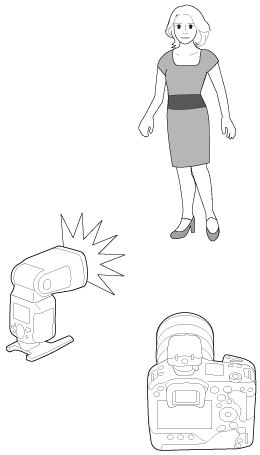
This section describes basic fully automatic wireless shooting with the ST-E10 attached to the camera as a sender to control a flash unit (receiver) wirelessly.
Autoflash Using One Receiver
-
Set the flash unit as a receiver.
- For instructions on configuring receiver settings, refer to the instruction manual of the flash unit.
- Set A, B, or C as the firing group. It will not fire if set to D or E.
-
Check the channel and ID.
-
Position the camera and flash unit.
- Position them within the range shown in Positioning and Operation Range.
-
Press the
button.
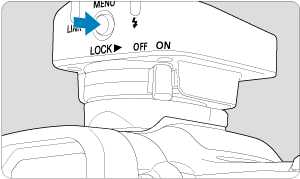
- [Flash function settings] is displayed on the camera screen.
-
Set the flash mode to [E-TTL II flash metering].
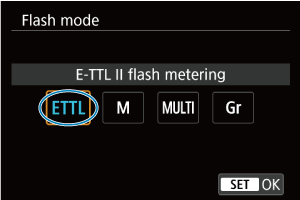
- Select [E-TTL II flash metering] and then [OK].
- The receiver unit is set automatically to
during shooting, controlled by the sender unit.
-
Check the connection and make sure the flash unit is charged.
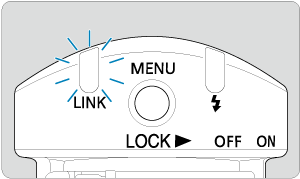
- Confirm that the
lamp is lit.
- When the receiver flash is charged, the AF-assist beam emitter blinks at approx. 1 sec. intervals.
- The charge lamp on the sender is lit when all flash units are fully charged.
- Confirm that the
-
Check the performance.
-
Take the picture.
- Just as in normal flash photography, shoot after configuring the camera.
Caution
- Radio transmission is not possible unless the
lamp is lit. Check the transmission channels and wireless radio IDs of the sender unit and receiver unit again. If you cannot connect with the same settings, turn the sender unit and receiver unit off and on again.
Note
- You can set the camera to beep when receivers are fully charged (C.Fn-20).
Autoflash Using Multiple Receivers
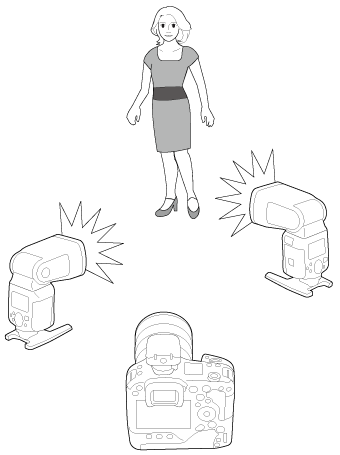
Use more receivers and fire them as a single flash unit when more light is needed or as an easy way to ensure ample lighting.
Add receivers, and then shoot as described in “Autoflash Using One Receiver” (). A, B, or C can be set as the firing group.
Flash units added as receivers all fire at the same output, and the total, combined output is automatically controlled to provide standard exposure.